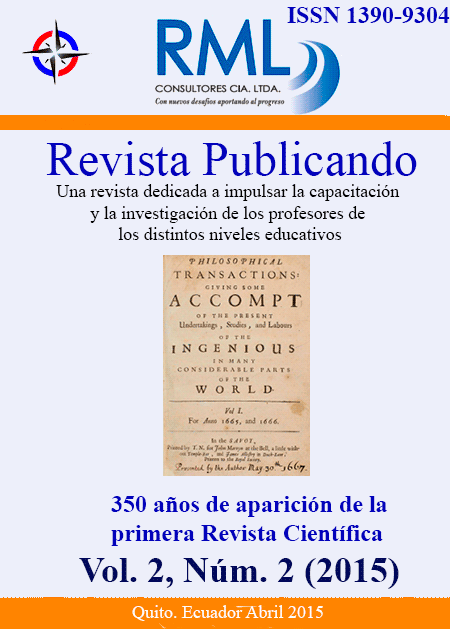Abstract
Using the Academic Google, a Database was prepared, with a total of 869 references, which allows locating the study of the subject on the productive matrix, both in its conceptual relationship with important aspects such as: territorial development, experience of certain countries, good living and sumak kawsay, as in relation to more specific works on this subject.
The results obtained indicate that the subject of productive matrix, although it is being addressed in different theses, has not been addressed in terms of its publication in indexed journals and indicated that it is a subject that, while requiring theoretical depth, can and should be approached in the current context of what the Ecuadorian experience can mean in it.
References
Abarca Anchundia, J. L., & Armendáriz Tubón, D. C. (2014). Estudio de la cadena productiva de café de altura en la parroquia La Carolina, cantón Ibarra, provincia de Imbaura. Retrieved from http://www.dspace.uce.edu.ec:8080/bitstream/25000/3057/1/T-UCE-0005-463.pdf
Acosta, A. (2008). El buen vivir, una oportunidad por construir (Tema Central).
Azpiazu, D., & Schorr, M. (2010). La industria argentina en la posconvertibilidad: reactivación y legados del neoliberalismo. Problemas del desarrollo, 41(161), 111-139.
Boisier, S. (2004). Desarrollo territorial y descentralización: el desarrollo en el lugar y en las manos de la gente. Eure (Santiago), 30(90), 27-40.
Boisier, S. (2010). Descodificando el desarrollo del siglo XXI: subjetividad, complejidad, sinapsis, sinergia, recursividad, liderazgo, y anclaje territorial.
Delgado, G. (2009). Maquilización y dependencia tecnológica: el caso de México.
García Álvarez, S. (2014). Sumak Kawsay o buen vivir como alternativa al desarrollo en Ecuador. Aplicación y resultados en el gobierno de Rafael Correa (2007-2011).
Gonzalez-Alonso, J. (2014). Búsqueda en Repositorios Latinoamericanos. Crear Virtual. Cursos. Retrieved 15 Marzo, 2015, from http://www.crearvirtual.net/cursos/
Harzing, A.-W. (2014). Harzing.com. Publish or Perish. Retrieved 22 de Junio, 2014, from http://www.harzing.com/pop.htm?source=pop_4.6.4.5271
Houtart, F. (2011). El concepto de Sumak kawsay (buen vivir) y su correspondencia con el bien común de la humanidad. Revista de Filosofía(69), 7-33.
Infante, R., & Sunkel, O. (2009). Chile: hacia un desarrollo inclusivo. CEPA, 135.
Jaramillo, J. (2014). Perspectiva Económica del Ecuador: La Matriz Productiva 2014: Perspectiva IDE Business School.
Pazmiño, J. F. (2014). Preparación de una Base de datos con las publicaciones sobre clústers empresariales referidas en Google Académico. 2014, 1(1), 10.
Pazmiño Santacruz, M. R., & González Alonso, J. A. (2014). Análisis exploratorio sobre las publicaciones relacionadas con la comunicación organizacional en Pymes. 2014, 1(1), 9.
Stefanoni, P. (2011). Bolivia Hoy: Rupturas, inercias y desafios. 2011, 26. doi: 10.5195/bsj.2011.28
Walsh, C. E. (2009). Interculturalidad, estado, sociedad: luchas (de) coloniales de nuestra época: Universidad Andina Simón Bolívar.

This work is licensed under a Creative Commons Attribution-NonCommercial-ShareAlike 4.0 International License.
Copyright (c) 2019 Jhony Fabián Pazmiño
